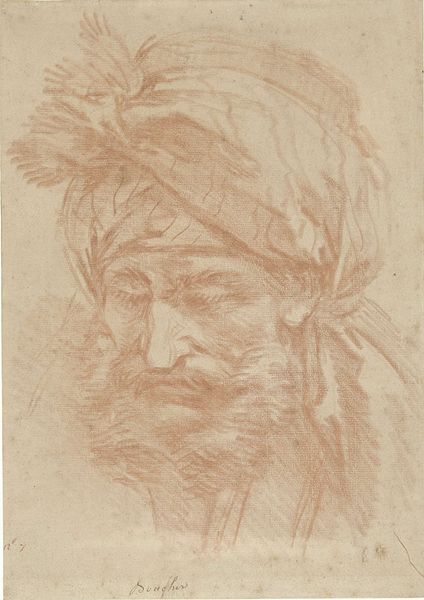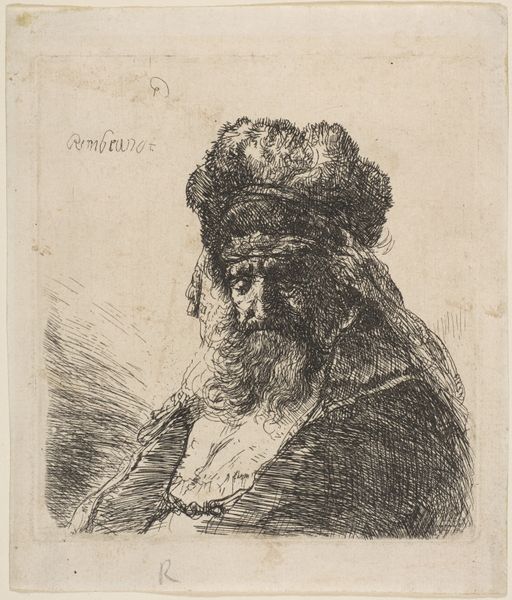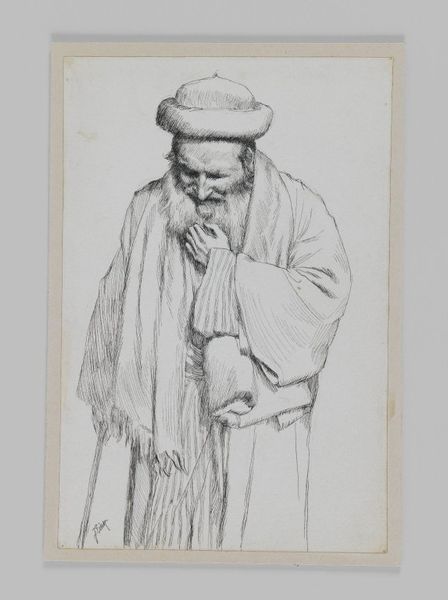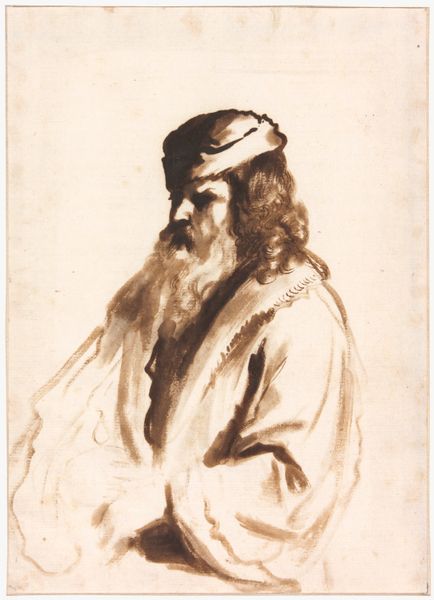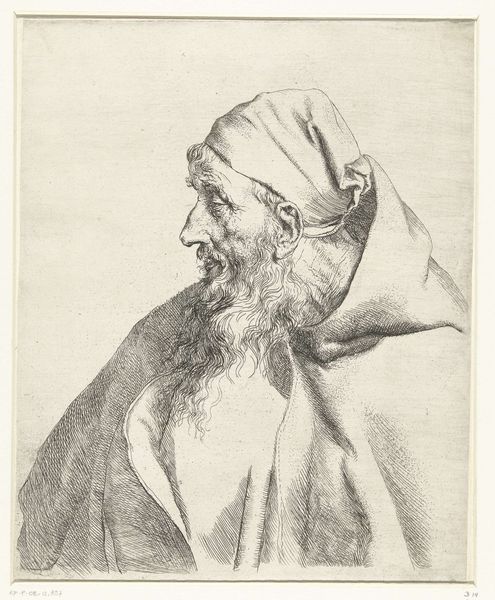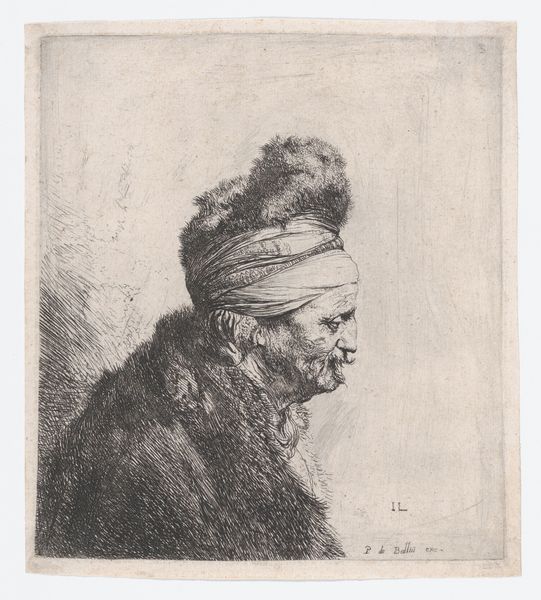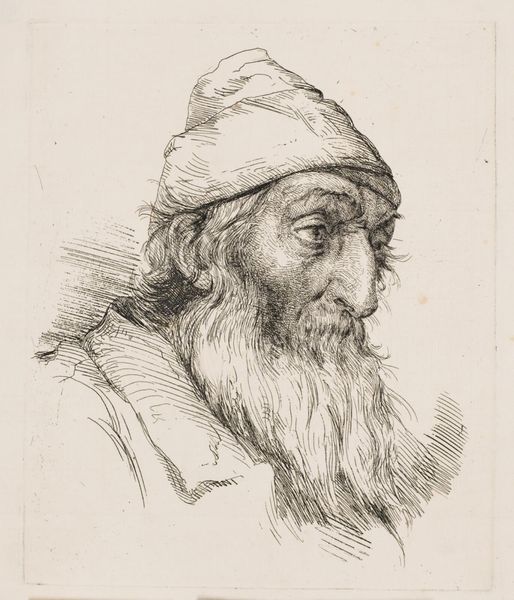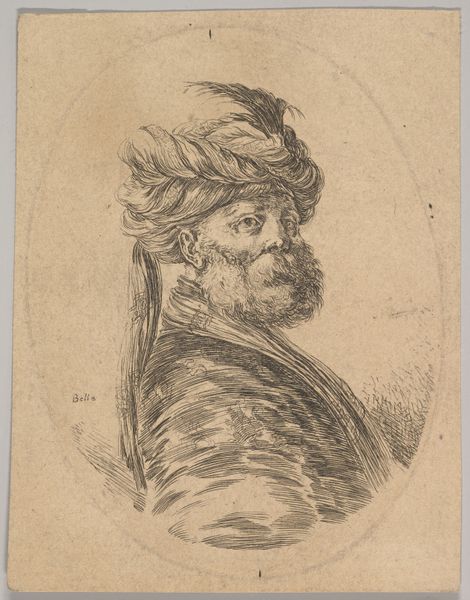
Skægget mandsportræt, trekvart profil mod venstre, med turban 1835 - 1836
0:00
0:00
drawing, pencil
#
portrait
#
drawing
#
thin stroke sketch
#
pen sketch
#
incomplete sketchy
#
personal sketchbook
#
linework heavy
#
ink drawing experimentation
#
romanticism
#
pen-ink sketch
#
pencil
#
sketchbook drawing
#
sketchbook art
#
realism
#
initial sketch
Dimensions: 76 mm (height) x 102 mm (width) (bladmaal)
Curator: Looking at this drawing, made with pencil on paper by Martinus Rørbye, we see it’s entitled "Skægget mandsportræt, trekvart profil mod venstre, med turban" or "Bearded Man's Portrait, Three-Quarter Profile to the Left, with Turban," dating from 1835 to 1836. It's part of the collection at the SMK, the National Gallery of Denmark. Editor: It feels immediate, almost like a fleeting thought captured on paper. There’s a delicacy in the linework, especially around the face and the folds of the turban, which give it a quiet intensity. Curator: Precisely. The drawing offers insight into Orientalism's role during the Danish Golden Age. We should note Rørbye's travels to places like Greece and Turkey which provided direct, intimate experience with Islamic cultures that Western European orientalist art often portrayed in more fantastical, distancing ways. This piece reflects the more complex and varied nature of encounters at the time. Editor: Yes, and the turban itself becomes this potent symbol. Across different cultures and historical periods, head coverings have always signaled identity, status, sometimes even political leanings. In this sketch, I wonder what the turban represents – is it a romanticized exoticism, or something more considered? Curator: Given that Rørbye made it during his travels, and his artistic commitment to depicting encountered cultures with reasonable realism rather than pure exoticism, I'd say this rendering offers something more than mere fantasy. Instead, perhaps, it represents intercultural engagement. The Romantic movement of the time definitely involved the European artistic and intellectual community's fascination with diverse world cultures. Editor: The very act of sketching also adds a layer. A drawing like this feels raw and honest, like an unedited impression of the man himself. The medium communicates the encounter without excessive pomp. Curator: I agree. His quick, expressive marks allow us as contemporary viewers to reflect critically on our understanding of culture, of artistic expression, and of representational artistic practices during the Age of Romanticism, while also inviting us to empathize with Rørbye himself and this unnamed man whom Rørbye encountered in his journey. Editor: Absolutely, this little sketch contains whole worlds to consider! Thanks to pieces like this we gain a more precise historical vision into past artistic engagement with intercultural experiences. Curator: Indeed. It enriches not just our understanding of art, but also of social and intercultural interactions across time.
Comments
No comments
Be the first to comment and join the conversation on the ultimate creative platform.
